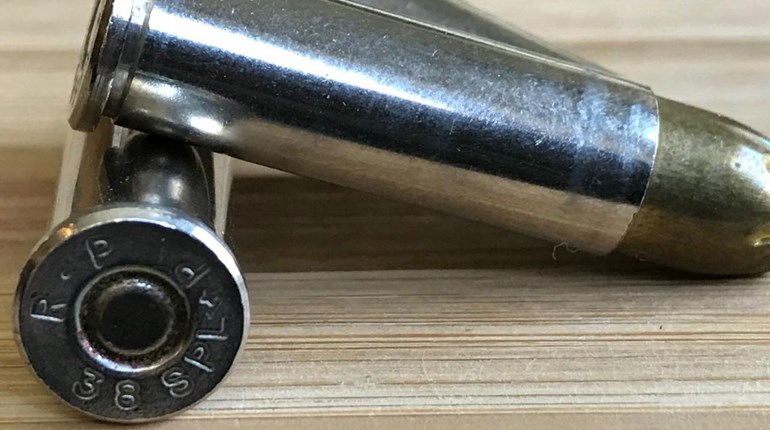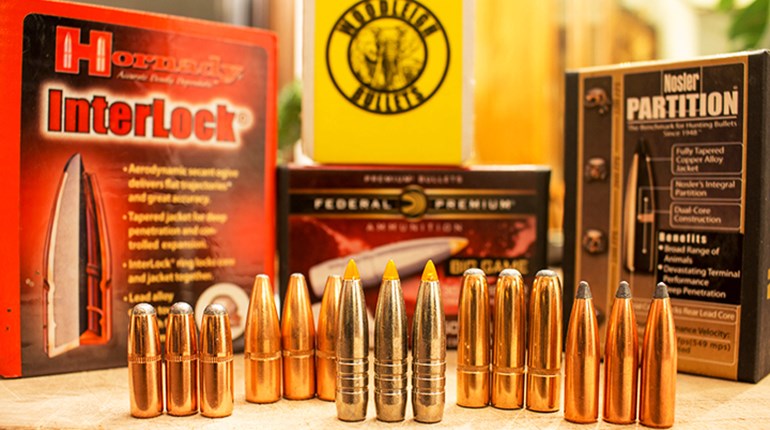
We’ve observed that the ammunition drought is waning—thank goodness. Joining the ramp-up of established suppliers are new domestic and offshore sources, all supplemented by healthy growth of, and interest in, handloading. Thank goodness, again. We can finally get back out to the range and not treat every cartridge like a gold nugget.
For reasons that remain a little murky, however, it seems as though we’re seeing more ammunition-related issues once we’re there. None of these—happily—have been serious, but it seems as though folks are treating cartridges as a commodity just a bit more than is truly wise. Despite being small packages, the little buggers are complex and powerful: It pays to know just what you’re feeding your firearm, and be hyperaware of how they function together. “…a stoppage is a stoppage, and most are preventable.”
We took a good look at the sorts of things that can go wrong on the back end of the cartridge. This is usually the stuff that prevents firing—bum priming of one type or another. Problems at the other end can be just as formidable, though they usually prevent feeding. Either—duh—can be a major nuisance on the range, but a genuine danger for the Carry Life: A stoppage is a stoppage, and most are preventable.
Bullet Damage
This one is easy, and we’ve partially dealt with it here. But take a peek at the front of every bullet you load, and especially for defensive purposes. Obvious flaws in symmetry or serious gouges are automatic disqualifiers.
We also perform a tactile check on “flaring” closure. This is a rare flaw in factory ammunition, but not, repeat not unknown. This occurs after the case mouth is slightly over-expanded to accept the base of the bullet without damage, and then closed (usually with a taper crimp) to a diameter intended to stop the cartridge at the correct depth against the “shoulder” at the far end of the chamber. Insufficient crimp/closure can lock your action up astonishingly tight, and is a bear (even dangerous) to clear. In the check for this, you’re looking for no “sharpness” at the rim of the case, and certainly no remaining visual evidence of the flare.
Be careful you don’t confuse the undesirable sharpness with a defined edge. If it’s too smooth, you have an over-crimp that can create ignition and accuracy problems, but it’ll feed as though greased!
The most reliable way to capture all these checks at once is the “thunk” test. Remove the barrel from your pistol, clean the chamber, and let each round fall into the chamber (don’t push it in). A properly sized round will “thunk” to a stop with the base of the case juuuuust clear of the feed ramp—we think you’ll know it when you hear it. Rounds that don’t do this can have a variety of problems—all are bad, some are dangerous. Discard and preferably disassemble them.
Bullet Profile
This is a more difficult assessment to make on inspection alone than you might think. Generalizations are certainly possible, but even these must be taken with a grain—or several thousand grains—of salt. Remove the barrel from your pistol, clean the chamber, and let each round fall into the chamber (don’t push it in).
Round-nosed or conical bullets are generally the best for feeding reliability, and that’s why they’re so common as auto-loader target fodder. Their old name was “military ball,” or just plain “ball” ammo, and they’re everywhere in the .380 ACP, 9 mm and .45 ACP worlds. They aren’t foolproof, however: If overall length (commonly known as OAL) isn’t right, they can be very nearly as aggravating as …
… Truncated cones. Ours is a love-hate relationship when “TCs” are the topic of conversation: We’ve had both good and terrible luck with them. They aren’t all that common outside of .40 caliber (both .40 S&W and 10 mm). That’s for a good reason—they are generally malfunction-prone if OAL doesn’t fall in a very narrow range. This means they’re sensitive to feed ramp shape/collision angle, hence sensitive to slide speed, hence to recoil spring rate, and hence to grip mechanics. You get the idea. That said, if they work in your gun, they’re likely to work very well, as they allow more mass for a given profile, and this can make TCs seem softer-shooting than other shapes.
Hollow-points are the remaining major group of profiles. They’re widely and correctly associated with defensive use because of how they react on striking targets: The hollow nose is essentially a designed-in “fault” that causes the bullet nose to open (often dramatically) further on impact. Such “mushrooming” rapidly transfers bullet energy into the target and keeps the projectile from exiting what it hits and causing unintended downrange damage or injury.
Some varieties have rounded external profiles and feed with nearly the reliability of ball. Others are more slope-sided like truncated cones. These designs afford a bigger “hollow” and theoretically better expansion, but may not feed as well. These can be a big crapshoot from individual firearm to individual firearm. Though they generally feed much better in the last 10 years than they used to, before choosing anything for a Carry Life application, they require …
Testing, Testing, Testing
Anybody that “shoots for a living,” that is service members, law enforcement, etc., generally benefits from the work of professionals that do this for them. All the factors that go into the “big tent” called reliability are within their purview. They have the training, resources and facilities to exercise every aspect of ultra-reliability. They’re generally damn good at it too.These can be a huge crapshoot from individual firearm to individual firearm.
They have another huge advantage that often escapes notice—a comparatively tiny number of firearms that must rise to the vaunted levels of performance their environments (rightly) require. In consequence, manufacturers are also far more likely to pay close attention both to their needs and any issues—again, just as they should.
Mere mortals make their own version of the reliability equation both better and worse. On the positive side of the ledger, choices from a broader selection of firearms and ammunition can be tuned to very specific—even personal—needs/tastes. The downside should be equally obvious: Dramatically more potential variation in performance accompanies this huge variety.
Spare a little pity for manufacturers here: They try to meet everybody’s needs with all firearms and for every conceivable, legit purpose in a huge variety of calibers. That’s the job we don’t envy!
All of which brings us to our point: If you’re serious about the Carry Life, you dare not trust anybody else’s evaluation of ammunition for one reason—they don’t have your firearm.
While modern designs and manufacturing methods have substantially reduced gun-to-gun variation in the last generation or so, it is still less than perfect. You can probably expect that if your pal’s Model XYZ will run Ammo ABC, yours will too. But you probably cannot expect that if Company 123’s version of Model ABC will run given ammunition, your Company 789’s version of the XYZ will. (1911, Beretta/Taurus/SIG, CZ/EAA owners, are you listening?)
Nor should you expect that compact versions of full-size guns will behave as their bigger relatives do. This gets complicated in a hurry, but locking/unlocking geometry, barrel length, slide mass, recoil spring rates and your ability to keep operating energy “in the gun” as size changes are just a few of the variables that can turn your reliable workhorse into a finicky diva in nothing flat.
So how much testing of expensive self-defense ammo is enough, you gulp and ask? Well before you buy a single round, do some research. Firearm manufacturers are the best resource here: They may have military and or law enforcement contracts that they’ve tested for, and met. Cash in, so to speak, on this data if you can. More and more firearm companies are even making their own ammo; if this isn’t a recommendation, what would be? Mere mortals make their own version of the reliability equation both better and worse.
The next best resource is local law enforcement. While Departments are likely constrained by liability concerns from “official” comment, use your imagination a little, and you can often find out what they load. If your luck is good, you may be able to connect the dots between your defensive firearm and a nearby agency, which is better still: Use what they use.
Failing that, we have a hard time recommending anything less than 100 rounds, and 150 or 200 is better.
<<Cue agonized groans>>
Yep: It’s a beating money-wise, but think about consequences. Even though your goal is to be so observant that you avoid altercations altogether, or so skilled that you play your own intimidation card, in the end a defensive firearm must be utterly reliable. And how that firearm behaves in your hands is the only test that really matters.
So inspect—and test—those cartridges, and Carry on.

































